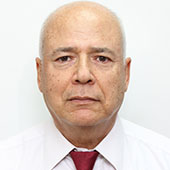It is important to understand the structure and the procedures of the different Pharmacopoeias. Some general chapters and the monographs of some widely used excipients have already been harmonised between the most important Pharmacopoeias, USP, Ph. Eur. and JP in the context of the Pharmacopoeial Discussion Group (PDG). But for a large number of general methods differences still exist. Therefore, some of the frequently asked questions are:
- How to use alternative procedures and interchangeable methods?
- What are the allowed exceptions to the obligation to perform all tests?
- How can multi-compendial testing strategies look like?
- How to prove equivalence?
In addition, PDG harmonisation does not include upcoming important pharmacopoeias like Indian and Chinese Pharmacopoeias.
This Live Online Training will discuss these issues and provides support in order to successfully deal with compendial methods and their differences.
Pharmaceutical companies have to follow Pharmacopoeia standards in order to meet regulatory requirements. However, there is no single Pharmacopoeia which can be applied in all regions. The US FDA may enforce USP monographs which then become mandatory whereas compliance with Ph. Eur. is mandatory in 39 member states and the European Union (EU) and is applied in over 100 countries worldwide. Moreover, also other Pharmacopoeias exist in the world like the Japanese (included in the PDG harmonisation process) , Chinese, Russian or Indian Pharmacopoeias.
But what are the differences and how to deal with quality standards and test methods if products are manufactured and released for different markets?
This Live Online Training addresses employees and managers from Quality Control Labs. It also addresses colleagues working in Quality Assurance and Regulatory Affairs department.
Date of the Live Online Training
05 November 2025, 09.00 h – 17.30 h CET
06 November 2025, 09.00 h – 17.15 h CET
For our Live Online Training Courses and Webinars, we use Cisco WebEx, one of the leading suppliers of online meetings. At
https://www.webex.com/test-meeting.html you can check if your system meets the necessary requirements for the participation at a WebEx meeting and at the same time install the necessary plug-in. Please just enter your name and email address for the test. If the installation is not possible because of your rights for the computer system, please contact your IT department. WebEx is a standard nowadays and the necessary installation is fast and easy.
Programme Day 1
Session 1: Introduction to Pharmacopoeial Testing
Structure, General Methods and Challenges of Ph. Eur. / Structure, Monographs and Activities of USP
- Structure of Ph. Eur. and USP
- Meeting Pharmacopoeial standards and Pharmacopoeial Designation
- The USP approach: Single Testing
- Structure of USP monographs:
- modern monograph
- flexible monograph
- Structure of Ph. Eur. monographs
- What the Pharmacopoeia does not say about a procedure
Additional Pharmacopoeias around the World – Japan, China, India, Int. Ph. (WHO), BP
- Historical developments
- The development of the International Pharmacopoeia
- JP, ChP, Russian Ph., and IP – similarities and differences
- Legal status and enforcement
- WHO Good pharmacopoeial Practices
Q&A Session 1
Session 2: Important Monographs: Harmonisation, Differences, Solutions
Analytical Instrument Qualification according to Ph. Eur. and USP
- USP General Chapter <1058> Analytical Instrument Qualification and Ph. Eur.
- Type of instruments and risk assessment
- Qualification steps: DQ, IQ, OQ and PQ
- Roles and responsibilities
General Texts and General Chapters
- Meaning of general texts and chapters
- Harmonisation efforts
- Recent revisions, e. g. elemental impurities and nitrosamine control
Revised Harmonised General Chapter on Chromatography (incl. Workshop)
- History and background of Ph. Eur. 2.2.46, JP <2.00>, USP <621>
- Mechanisms of harmonisation between Pharmacopoeias
- Definitions and adjustment of chromatographic conditions
- Important changes
Workshop 1: Reporting Compendial Test Results
Q&A Session 2
Programme Day 2
Session 3: Dealing with testing challenges
General Notices – Definitions and Requirements
- Use of alternative procedures & interchangeable methods
- Waivers to the obligation to perform all tests
- Scope of general monographs
- Definitions
Reference Standards - Similarities and Differences
- Definitions and guidelines
- Legal status of reference standards
- Types of standards
- Establishment and use/Testing and value assignment
- Similarities and differences between pharmacopoeias
Verification / Implementation of Compendial Procedures
- USP <1226> Verification of Compendial Procedures and Ph. Eur. Chapter 5.26 Implementation of Pharmacopoeial Procedures
- Difference between Verification and Transfer of an analytical procedure
- Chemical vs microbiological procedures
- Minimal performance characteristics to be verified
- What to verify in procedures for high-level (Assay by HPLC) and low-level analytes (Impurities by HPLC and TLC)
- When procedure verification is not required
- Documentation of procedure verification
Q&A Session 3
Pharmacopoeial Policy of Impurities Testing
- Which impurities are controlled?
- Analytical techniques and general texts/monographs
- Control of organic impurities
- What about Validation?
Alternative Methods to Pharmacopoeial Methods: Equivalence Testing of Two Methods
- Is a compendial procedure equivalent to an in-house validated procedure?
- Critical performance characteristics to be compared
- Plotting the results of comparative testing
- Traditional way of comparison of two procedures
- Equivalence testing with two one-sided t-test (TOST)
Multicompendial Testing Strategies
- Divergent and conflicting pharmacopoeial requirements
- How to proceed in case of missing harmonization?
- Full Testing, Worst Case Testing, Alternative Testing
- How to proof equivalence?
Workshop 2: Meeting Challenges of Pharmacopoeial Compliance
Q&A Session 4



